
Guide to Custom Product Labels for
E-Commerce Business
It’s the 2020s, and there’s almost nothing you can’t buy on the internet.
From groceries to skincare to high-end electronics, where once it was inconceivable to purchase certain items online, e-commerce has become the preferred shopping method for a rapidly growing segment of consumers in nearly every category.
But people shop differently online than they do in brick-and-mortar stores—partly due to e-commerce technology’s unique capabilities (and limitations), and partly due to the evolving values of a younger generation.
To stand out and make the sale, you need to make sure your custom product labels and packaging are optimized for your target e-commerce audience and their customer experience.
Note: We know that from an e-commerce perspective, the term “product labels” also refers to the digital graphics (or “stickers,” so to speak) added to product photos to make them more appealing. These graphics, with eye-catching copy like, “20% off,” “Selling Fast,” or “2020 Gold Award Winner,” are a fantastic way to help turn browsers into buyers.
We’re talking about the physical custom labels on your products and packaging, and why—and how—they should adapt to your e-commerce audience.
So, if your products or packaging have labels—and you want those labels to help you deliver a great CX that turns browsers into buyers, and buyers into return customers … and maybe even evangelists?—you’re in the right place.
This guide will cover everything you need to know to design and order custom product labels for online sales success. Among other things, you’ll learn:
How online buyers’ shopping habits diverge from in-store consumers, and what it means for your product label.
How to ensure your label will survive the rigors of the shipping and delivery process.
How the latest label technology can help protect your customers, thwart counterfeiters, monitor your supply chain, and respond quickly to market trends.
How the latest label technology can help protect your customers, thwart counterfeiters, monitor your supply chain, and respond quickly to market trends.
Ready? Let’s get started!
Why Optimize Your Product Labels for E-commerce: The Market Opportunity
If your brand hasn’t given some serious thought to how you present your products online, you may be missing a significant opportunity to expand your base of loyal followers. More and more consumers are migrating to e-commerce for some or all of their shopping.
The latest forecast from eMarketer predicts worldwide e-commerce sales will top $5 trillion in 2022 and represent a fifth of all retail sales. By 2025, global e-commerce will exceed $7 trillion and 23% of all retail sales.
The global shift toward e-commerce was already well underway before the COVID-19 pandemic, but the pandemic clearly accelerated the transformation. According to a 2022 ClearSale report:
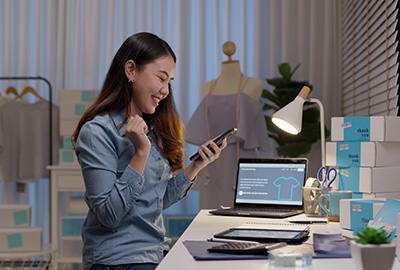
78%
of consumers increased their frequency or amount of online shopping during the pandemic
13%
of consumers made an online purchase for the first time ever after March 2020
45%
of consumers say they shop online once or twice per week
Online shopping becomes a lifelong habit for people who try it. For example, before the pandemic, very few people bought groceries online. During the pandemic, nearly 60% of Americans gave it a shot. By 2026, online shopping could account for 20% of the U.S. grocery market.
Related Reading: The Complete Guide to Custom Food and Beverage Labels
Online shoppers are quickly exploring other categories where brick-and-mortar sales once dominated. Just look at the U.S. health, personal, care and beauty market, where analysts expect e-commerce sales to more than double from about $54 billion in 2019 to nearly $116 billion in 2023.
Is your brand poised to seize (or grow) your share of the flourishing e-commerce market?
Custom Product Labels and the E-commerce Customer Experience
Adapting your product labels for e-commerce will help your brand win new customers and deepen your relationship with your current fans.
To demonstrate, let’s walk through each stage of the typical e-commerce buyer’s journey with a special focus on how your custom product labels can boost or hurt your sales:
Step 1: Browsing
Most online shopping journeys begin with a virtual storefront or marketplace where consumers can browse a selection of products. Product listings typically include the product name, a thumbnail image, the price, a star rating and shipping information.
You may choose to sell your products via your own shopping site or app, or you can list your products on an e-commerce marketplace such as Amazon or Etsy. (Or you can do both.) There are pros and cons to each approach:
- Selling on your own site gives you more control over the buyer experience.
- Selling on a large e-commerce marketplace puts your brand in front of customers who may never visit your site—but it also exposes you to intense competition.
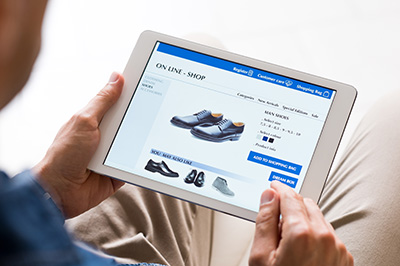
Whether potential buyers are viewing your product listings on your own shopping site or a giant e-commerce marketplace, one thing is certain: Most of them are not using a desktop computer. According to the Salesforce Shopping Index, 71% of retail website visits in the fourth quarter of 2021 came from smartphones. Only 27% of visits came from desktop computers. As of April 2021, 29% of smartphone users in the U.S. used their phones to purchase products or services at least once a week.
Want to optimize your custom product labels for e-commerce? Make sure to consider the mobile experience.
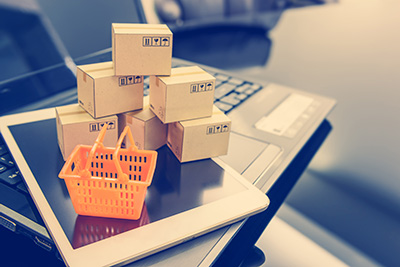
How Consumers Browse Today
Over half of U.S. adult shoppers begin their online product searches on Amazon. Only about 16% head to brand or retailer websites. This means that, as on physical store shelves, your product packaging must stand out to get noticed among the competition.
However, while online shoppers have similarly short attention spans as their in-store counterparts, they experience your product from a very different perspective:
- Online browsers’ first view of your product is often in two dimensions, via small digital thumbnails.
- And because most people shop online using their mobile devices, those thumbnails can be very small indeed.
Adapting Your Product Label Design for the Small (Phone) Screen
Your product label is a crucial packaging design element for telling your brand’s story and connecting with your target audience online and in-store.
But its design might fail to impress within the cramped confines of an e-commerce browsing page, especially on small mobile screens.
Best Practices for Custom Product Label Design for E-commerce
Your Graphics
E-commerce is an excellent opportunity to simplify your label design, focusing on the essentials like your brand colors, a clean logo, the product name and one or two key phrases.
(When in doubt, minimalism is always on-trend.)
Your Text
On the front packaging, emphasize the product aspects your customers care about the most, such as active ingredients or sustainability features (more on that below). Resist the urge to go overboard with your text; you can always provide more details for interested buyers on your back label.
Your Colors
Different colors evoke different emotions—consciously or subconsciously. For example, red stirs up feelings of love or passion, while green is associated with the earth, nature and health.
Whether you’re changing your label’s colors or altering its design, be careful not to shake things up too much. You don’t want your regular buyers to scroll past your product without realizing it’s yours, so adapt … but hold on to whatever makes your brand iconic. (A talented label designer can help you preserve your brand’s essence while optimizing your custom product label to attract online viewers.)
Wow your customers – while saving time and money, with our Guide to Product Label Design
Step 2: Buying
If an online shopper is intrigued by your product’s thumbnail image and description, they will click through to a product page. There, they will typically find larger photos from additional angles, a written product description, reviews, and, of course, the option to add the product to their shopping cart.
Which product page elements are most important for convincing e-commerce buyers to purchase? A 2020 survey of Amazon beauty consumers provides some insight:

read reviews
read product descriptions
look at product photos
read the ingredients
From this, we can surmise that online shoppers are interested in learning as much as they can about your product before they buy. This is your chance to provide the information that potential buyers desperately seek.
What Do Consumers Need to Know Before Buying? Increasingly, it’s Your Values.
Many online buyers are scrutinizing your product label for the same kind of information they would search for in stores, such as nutrition information, ingredients, and where your product was manufactured.
But one thing to keep in mind when designing your custom product label for e-commerce is that online shoppers are, on average, younger than brick-and-mortar customers:
- February 2020 data showed millennials aged 25 to 34 representing the largest group of digital buyers in the U.S.
- An even younger age group, Generation Z, is coming on strong, possessing a collective buying power that exceeds $150 billion.
These younger age groups are more value-driven in their buying decisions than previous generations. A fifth of Gen Zers strongly agree that the brands they buy from must reflect their values (according to a 5WPR survey). More than a third of Gen Zers enjoy buying products to display their political or social beliefs. For Gen Zers and millennials, values trump brand loyalty. In a McKinsey survey, 42% of both age groups cited “purpose” as the primary factor motivating them to change brands.
What is one of the chief values they’re seeking out? Sustainability. Gen Zers ranked “climate change/protecting the environment” as their top concern in a 2021 Deloitte survey; millennials ranked the environment a close third behind health and employment.
According to a First Insight survey, 62% of both groups say they prefer to buy from sustainable brands, and a majority of each group says they would be willing to spend more than 10% for sustainable products.
Millennials aged 25 to 34 represent the largest group of digital buyers in the U.S.
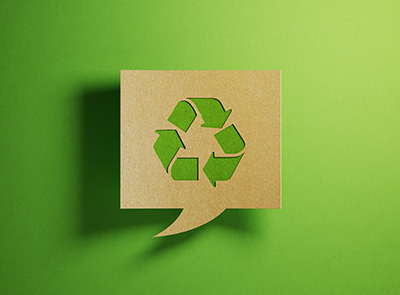
Make E-commerce Browsers Feel Good About Buying
So, when millennials and Gen Zers (and the other online buyers they inspire) view your product labels online, they’ll be looking for indications your brand genuinely supports the same social and environmental causes they care about.
There are several ways to use your product label to demonstrate your brand’s commitment to sustainability, equity or any other core cause:
- Earn and display voluntary certifications such as the Non-GMO Project seal, Fair Trade certification or one of the cruelty-free bunnies.
- Highlight your sustainably-sourced ingredients.
- Provide recycling, reuse, or composting instructions for the label and packaging. (Removable labels make packaging more reusable.)
- Use QR codes or other smart label features to point customers toward more information about your company’s values.
- Design and construct your label using sustainable materials and methods. (Click here for a comprehensive eco-friendly labeling guide.)
Is Your Product Label Influencer Friendly?
Nearly half (44%) of the members of Generation Z have made a purchasing decision based on a social influencer’s recommendation (compared to about a quarter of the total population).
Influencer videos often feature in which the influencer showcases not only the product but the product packaging.
This is your product label’s moment in the spotlight, so make it count! A few simple design tweaks can give your custom product labels a premium look and feel that just pops on influencer videos:
- Metallic foils or inks for upscale elegance.
- Thick, creamy paper and embossed lettering for a luxurious texture.
- Coarser, unbleached paper for a handmade or vintage
- Transparent labels to let your product do the talking.
Want to learn more about how to make your product packaging shine for unboxing videos? The e-commerce geniuses over at Shopify share all the details in their article,
Feel free to get inspired … and then ask us how to help make it happen!
Step 3: Receiving
When you sell your products online, you’re not just delivering them to stores but thousands of customers located all over the country and possibly around the world.
Your products may be thrown together in boxes with unrelated products that can crush or puncture them. Delivery and warehouse workers may toss your packages around without considering the fragility of their contents. And when your products finally reach their destinations, they may sit for hours—or even days—on cold, damp or frozen porches or in the blazing sun.
Then, the entire process may reverse itself. Keep in mind that 20% of online orders are returned.
Warehousing, shipping, delivery and returns can be perilous, which is why e-commerce merchants invest so much effort into designing packaging to protect their products from the fulfillment center to the front door—and back.
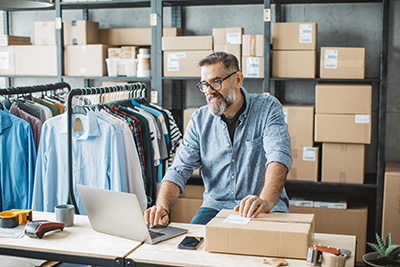
But as you pad out your boxes with biodegradable packing peanuts and air pillows, think about your product labels’ durability, as well. Environmental conditions such as moisture, direct sunlight, and rapid temperature changes can cause labels to rip, peel, run and smudge. Rough handling can tear labels from boxes, and caustic industrial solvents can weaken adhesive bonds.
How to Ensure Product Label Durability for E-commerce
Customers click on “purchase” and hope the products they receive live up to their expectations. But if their first impression of your product—or your brand itself—is a peeling, damaged label, that impression might stick around long after the label itself has worn away. Getting a damaged product can be disheartening, even if the damage is limited only to the product’s labels.
(Plus, a peeling, faded label looks horrible in unboxing videos and online reviews.)
Here are some tips for shoring up your product labels’ durability against the rigors of e-commerce:
Use the right adhesive for the job.
Ask your label printer about waterproof or water-resistant labels.
Prioritize abrasion resistance.
Securing Your Product With Tamper-Evident or Tamper-Proof Labels
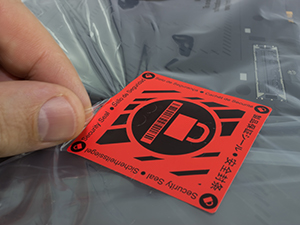 Your product passes through several hands throughout the e-commerce process before arriving in the hands of your customers. Each step along the way exposes your product to a greater risk of tampering. Product tampering can occur in many different forms, from pilfering high-value electrical components to replacing life-saving pharmaceuticals with fakes.
Your product passes through several hands throughout the e-commerce process before arriving in the hands of your customers. Each step along the way exposes your product to a greater risk of tampering. Product tampering can occur in many different forms, from pilfering high-value electrical components to replacing life-saving pharmaceuticals with fakes.
Tamper-evident and tamper-proof labels protect your customers and your brand’s integrity by preventing tampering and warning users that packaging may have been opened.
If tamper-evident or tamper-proof labels are appropriate for your product, your label printer might suggest:
- Brittle self-destructing materials that disintegrate rather than peel off cleanly. (The technical term is “frangible.”)
- Void features that leave behind an indication (such as a message written in a hidden layer) when a label has been removed.
- Die-cut perforations or slits that make it difficult or impossible to remove the label without physically altering it.
Labels and Technology for E-commerce Today
So far, we’ve explained how custom product labels can help you sell your products more effectively online, attract new customers, and deliver on your brand’s promise of value.
But it’s not just about the product label. Custom labels can help your business expand your e-commerce footprint in many ways:
- Packaging closure and decorative stickers add flair to your boxes, contributing to the premium unboxing experience customers crave.
- Barcode labels and RFID tags help you monitor your supply chain and track your products from the warehouse to your customers’ homes. This track-and-trace technology is an essential tool for preventing the gray market sales that cost e-commerce merchants billions every year.
- Security labels use cutting-edge visual technology to stop counterfeiters from stealing your hard-earned brand image for their own profit — and from disappointing your customers with shoddy copies of your quality products.
- Shipping labels (constructed for durability, of course) ensure your products arrive in the right place on time and in one piece.
- Promotional stickers make excellent giveaways tucked inside product packaging to surprise and delight your customers.
- Digital printing and variable data labels help your brand stay nimble, adjusting labels quickly for new product releases, seasonal promotions and personalized customer experiences.

Keep in mind that many of these features can be combined in a single label to provide the ultimate in consumer engagement, brand promotion and security.
Advanced solutions such as these are not available from online self-service “sticker” providers. Choosing the right e-commerce label technology for your needs and budget requires expert advice that only an experienced label printer can offer.
E-commerce represents an opportunity to grow your business beyond the limits of geography and retail sales.
To make the most of this unprecedented moment in the marketplace, you need partners on your side to help you navigate the complexities of e-commerce, giving your company the time and space to focus on making great products. When it comes to label printing, choose a partner that understands e-commerce; has experience helping brands impress online with eye-catching, high-performing labels; and has access to a full range of materials and technologies to ensure your custom product labels never let you or your customers down.
Learn how to find a high-quality, experienced label printer using our comprehensive Custom Label Buying Guide.

